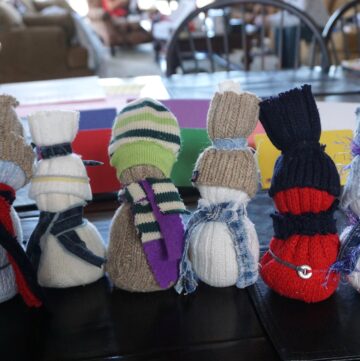I put off my discovery posts until I have enough to share, and in the end I find I have too much. Today’s collection includes the coolest technology I’ve seen in ages, the entrepreneurial story behind the kid-craze rubber band bracelets, a life hack for cleaning up broken glass (a too-common need in our house), a fascinating new book on gut health, a shout out to Nobel literature winner Alice Munro and a reminder to make Marcella Hazan’s genius tomato-butter sauce in memory of her accomplished life. Oh, and some back-to-school thoughts, the story behind PF Chang’s and my new weekly fun: community-sponsored seafood.
Gutbliss
Far from bliss, too many in modern society suffer from gut misery. A combination of poor diet and an overuse of oral antibiotics has resulted in bacterial imbalance and poor gut health, leading to chronic issues far beyond the digestive system.
Increasingly, research points to the gut as the source of many ailments, from skin to heart to brain. Problems can stem from an inability to digest the food we ingest, an inability of our bodies to derive necessary nutrients from the food, or the unwanted leakage of digestive elements out of their home system.
I just read a smart, fascinating interview from The Atlantic, headlined “What We Eat Affects Everything”, with Georgetown gastroenterologist Robynne Chutkan, who operates the Digestive Center for Women in Washington DC. Chutkan’s practice aims to investigate wide-ranging symptoms – digestion, fatigue, rosacea – to uncover and treat root causes. Intriguingly, she debunks the idea that the digestive system is the same for men and women.
Despite the goofy diet-guru subtitle of her new book, Gutbliss: A 10-Day Plan to Ban Bloat, Flush Toxins, and Dump Your Digestive Baggage, I’m expecting an illuminating read.
Power to the people
The coolest thing I’ve seen in ages, for so many reasons: Duolingo, a new learning tool for languages…
- not just because it’s a new way to learn Spanish, French, Italian, German, Portugese or English
- not just because it makes language learning fun and easy
- not just because it’s a simple-to-use, beautifully designed user experience
- not just because it’s free
- not just because it’s based in Pittsburgh
But because it’s crowdsourced. What does that mean?
On the input side, it means that anyone can create a language course on Duolingo. It’ll take some time – maybe 40 hours a week for four months – but if, say, you are motivated to save a dying language, or document your specific regional dialect, or you are a Game of Thrones fiend who wants to teach the world Darthraki, Duolingo gives you the tools to teach the world.
That’s cool enough. But there’s more.
Duolingo’s users – language learners across the world – are also contributing to Duolingo’s paid translation service. A recent Wall Street Journal article trumpets Buzzfeed‘s “brazen, nutty” plan to use Duolingo to translate its buzzworthy headlines and stories for international consumption. The checks in the system – comparing answers from many users – help create a translation as good or better than that of a professional translator, for much less than the 20 cents a word a professional would charge.
Like Henry Ford with his Model T assembly line, Duolingo breaks down an intricate endeavor – document translation – into many small, simple tasks that people perform separately. The genius is synthesizing all those simple tasks into a complex and cohesive end product.
Most “free” services pay the bills through intrusive ads. The ultimate coolness of ad-free Duolingo is that it makes money in a completely incidental, invisible and productive way.
It’s like an ecosystem in which Duolingo’s language learners, its translation clients and for the company’s own revenue stream all benefit from each other. An astoundingly clever triple win.
Duolingo’s Guatamalan founder, Luis Von Ahn, has a track record of innovative thinking. Von Ahn is also the guy that took CAPTCHA (Completely Automatic Public Turing test to tell Computers and Humans Apart) – that annoying online security test that involves typing in disfigured letters and numbers – and turned it into something genuinely useful. The reworked service, reCAPTCHA, uses everyone’s collective deciphering efforts to digitize real-world print materials, including all of the New York Times archives.
Technology can automate most of digitization: readable text is relatively easy for computers to decipher. But computers have trouble with crumpled pages or misshapen text. So reCAPTCHA gives you one legible “word” and one mangled print snippet. If you do a good job with the legible one, it figures your effort on the hard-to-read one is credible. So smart.
For his next project, I wish Von Ahn would solve a problem I think about every time I pass a gym: How to harness all that human effort into powering the world.
Rainbow bracelets
For more entrepreneurial inspiration, there’s Cheong Choon Ng, a Malaysian immigrant in Michigan, who came up with the hugely trendy Rainbow Loom to make intricate rubber-band bracelets with his two daughters.
One or more stretchy creations can be found on every kid aged four to 16, whose parents are only too glad to shell out $15 for a creative, non-electronic activity that can keep kids and their friends occupied for hours.
Ng, a mechanical engineer, and his wife used the $10,000 they’d saved toward college to manufacture the product, and the family struggled to assemble kits in their basement from the 2,000 pounds of rubber bands delivered from China to their midwestern home.
I hope the Ngs can maintain their success – kiddie trends flare and burn out so quickly.
For more on this story: one article from the New York Times and one from Entrepreneur.
Note: If you are in the market for a Rainbow Loom, don’t buy on Amazon (right now a Rainbow Loom on Amazon goes for more than twice retail). Your best bet is to find a Learning Express store near you (they were the first to take a chance on the product, and now it’s their runaway top-selling product). You can also purchase from Learning Express online or directly from Rainbow Loom on their not-great website.
Alice Munro, scoring one for moms and Canadians
I feel unaccountably happy for 82-year-old Alice Munro, winner of this year’s Nobel Prize for literature. It’s a personal victory, of course, but it’s also a win for the often-overlooked: 1) women, 2) short story writers, 3) mothers and 4) Canadians.
After her husband died earlier this year, Munro announced that she is done with writing. Some view this Nobel award as the Nobel committee’s standing ovation for Munro’s long, impressive career.
The Nobel Prize is not awarded posthumously (poor Robert Brout died in 2011 and missed sharing in this year’s Nobel in physics for the Higgs-Boson discovery), so I am especially happy for Munro that she is receiving this recognition in her lifetime.
Even a giant talent like Munro has to labor to sustain a career. Any at-home parent knows the incompatibility between focused work time and a busy household. In the introduction to her Selected Stories collection, Munro writes,
I did not “choose” to write short stories. I hoped to write novels. When you are responsible for running a house and taking care of small children, particularly in the days before disposable diapers or ubiquitous automatic washing machines, it’s hard to arrange for large chunks of time.
Munro’s win gains respect for the short story genre. Maybe in today’s times, Munro would have had a blog. Though that wouldn’t win her any Nobel prizes.
For more, I love this old interview with Munro by Mona Simpson from Paris Review.
Life hack: Cleaning broken glass (or finding lost diamonds)
With seven of us crowded into my mom’s kitchen, it’s a regular occurrence for some glass or dish to shatter on her hard tile floor. Every time, I’m grateful for my dad’s clever flashlight trick.
My dad, a resourceful engineer, had a system for everything, from loading the dishwasher to rolling up a toothpaste tube. After we cleaned up broken glassware, my dad would get out a strong flashlight and shine the beam parallel to the ground, just skimming the surface. Aside from being dismayed by the many crumbs on the floor, I would always marvel at the way glass shards would sparkle brightly amidst the shadowy debris of everything else.
I just passed this tip along recently to my friend who lost the solitaire out of her engagement ring. She hasn’t found it yet, alas, but she has found a lot of other sparkly bits on her floors.
Back to school
This Washington Post essay by Michael Gerson, “Saying Goodbye to My Child, the Youngster,” will resound with any parent who has sent a child off to college. Even for those of us with younger children, feeling the poignancy of Gerson’s transition is a good reminder to cherish the time now. As a friend once told me, “You think you have kids. But they’re only on loan.”
I also loved this article from the Wall Street Journal, “Why Tough Teachers Get Good Results.” Hopefully the same goes for parenting, or I am just the mean mom.
Real Chinese grandmas
The San Francisco Chronicle recently published a conversation between two 93-year-old matriarchs of Chinese cooking, Cecilia Chiang of San Francisco’s genre-busting Mandarin restaurant and Florence Lin, who taught Chinese cooking classes in New York for decades. Two women with awesome personal and professional longevity – a real inspiration.
And a surprise bonus to the interview: the origin of PF Chang’s, founded by Chiang’s son Philip along with his colleague Paul Fleming.
Community-sponsored seafood: H&H Fresh Fish
Cooking good seafood is easy – it needs only the barest of seasonings, the briefest of cook times – it’s the sourcing that can be challenging. It’s rare to find truly fresh seafood; most “fresh” seafood you’ll see in markets is merely thawed. Even if we’re willing to pay a premium for brain-boosting omega-3 fatty acids, very often seafood in the store is farmed, grain-fed, and no better than feedlot chicken.
Enter community-sponsored seafood (CSS): as with farmers markets and community-sponsored agriculture, CSS is a way for fishermen to deliver their catch directly to the consumer. I’m a month into my subscription with H&H Fresh Fish, run by a local couple who fish off the coast of Santa Cruz and partner with other local fishermen as well. They sell at farmers markets and operate a CSS network around the bay area, delivering the catch of the day on ice in insulated bags.
It’s super cool to know that the fish you are eating was swimming in the Pacific a day ago (forgive me, vegetarians!). I never would have thought I’d eat raw fish at home, but I couldn’t resist slicing up some sashimi with H&H’s superbly fresh albacore. And even the kids loved the flaky petrale sole, simply dusted with flour and pan fried.
Grazie, Marcella Hazan
I was sad that Italian cookbook author Marcella Hazan died recently, but at 89 she had a full life to celebrate. If any of you have not made her famously simple tomato-butter sauce from Essentials of Italian Cooking, it’s a stunningly easy recipe that you will want to make again and again. Easy as 1-2-3:
Throw together in a pot 1) good canned tomatoes (28 oz), 2) half a stick of butter and 3) an onion, sliced in half. Low simmer for a while (30-45 minutes), until the fat separates from the tomato. Remove onion, crush tomatoes with back of spoon, and salt to taste. Toss with hot pasta (or over polenta) and serve with grated Parmesan.
If you need pictures, Amateur Gourmet recently featured the recipe.
* * *
And if you made it through this whole piece…bless your heart and your endurance. You are awesome.





Thanks for the links. Gerson’s piece describes that bittersweet experience very eloquently. And I enjoyed the interview with the real Chinese grandmas immensely!